The Neuroscience of Big Brands | Brand Marketing Guidelines
- Home
- The Neuroscience of Big Brands | Brand Marketing Guidelines
Hubspot User Group Meeting February 2019 - London HUG
This is a transcript of the talk given by Flavilla Fongang from 3 Colours Rule at the Hubspot User Group Meeting in February 2019 in London.
Let’s talk about marketing. My name is Flavilla and, I came 16 years ago to London and I didn't speak a word of English. I came to London for my education, I was doing a BA in economics and another BA in marketing and communication. I fell in love with the city vibe and the people, and that's what attracted me to stay in London for such a long time. I worked in oil and gas and I'm tired of being with 50-year-old men in suits. I wanted to talk to younger people.
"I'm tired of being with 50 year old men with suits"
No offence to older people. Please don't take it the wrong way.
As you can probably see from my outfit. I love to dress. So I decided to become a fashion stylist. I worked with amazing people who were either trying to get a better job or to a greater position but didn't know how to present themselves in a better way. That’s what we call “Personal Branding”. Eventually, I got tired of it.
On another note, I can transform my knowledge into a course. My knowledge transferred onto online platforms and I've moved away from personal branding to branding businesses.
Business Branding
There's a difference between having a business and having a brand.
People are good at what they do. But when it comes to explaining the value, that's where we struggle. You can go to a coffee shop or Starbucks. It's just not the same thing. I was in Mexico a couple of years ago with my brother, we arrived in Cancun. And the first thing we saw was this great queue. What's going on, what are people queuing for? And the queue is to get a Starbucks coffee. That's a strong message for a brand.
If you have a brand and you're faced with too many choices, you're going to go for what you know and what you trust. As you can see, I don't take myself seriously except for my work and I'm passionate about their success because when I do well, I can brag about it.
We took them on a journey of asking me questions that were uncomfortable and sometimes asking for a formula. And I said, wow, that's great. That's what I'm here for. I see myself as not just working for them, but I am working with them as this was an extension of their business and that's very important. I'm going to show you how it looks. I'm going to not pitch it too much, but some of the strategy.
For example, how do you distinguish yourself in a busy saturated market, so you need a good brand and communication strategy? You need to create a web presence because people always check you out online. When your company has these two elements, the company will last.
Purpose of the Brand
We use newer marketing, we use newer science. So I'm not going to talk to you as a neuroscientist because I'm not one technically. But I want to talk to you in a very simple manner. 300 billion.
- What does that mean?
- What do you think?
That's the amount of money which is wasted on marketing because if we do it the wrong way every single year. That's a lot of money. The reason is that most of the time we rely so much on the wrong information our customers are giving us. And sometimes it's not effective or sometimes we're making assumptions.
When you love to make assumptions, that's probably the biggest mistake. I always say to my clients, do not guess. We have to make sure we are 100% sure about that. It is very important that you need to know is why you do what you do and why you believe in it. And if you look at all the biggest companies in the world, Apple, Coca Cola or Nike, they always start with the why.
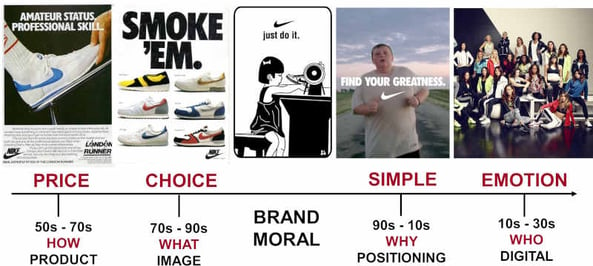
“Why” is very important, especially in a busy market because you couldn't get people on an emotional level on us. Do your research. Be curious, make sure you know what the golden circle is. I'm going to be complicated. Back in the day, people didn't have as many choices as I have now. Marketing was very much about explaining how things work, the first microwave or the first washing machine. After explaining “how”, we moved on to what people “want”. They didn't want to have the same product. It was about having more than one pair of trainers. What do you think happened after that?
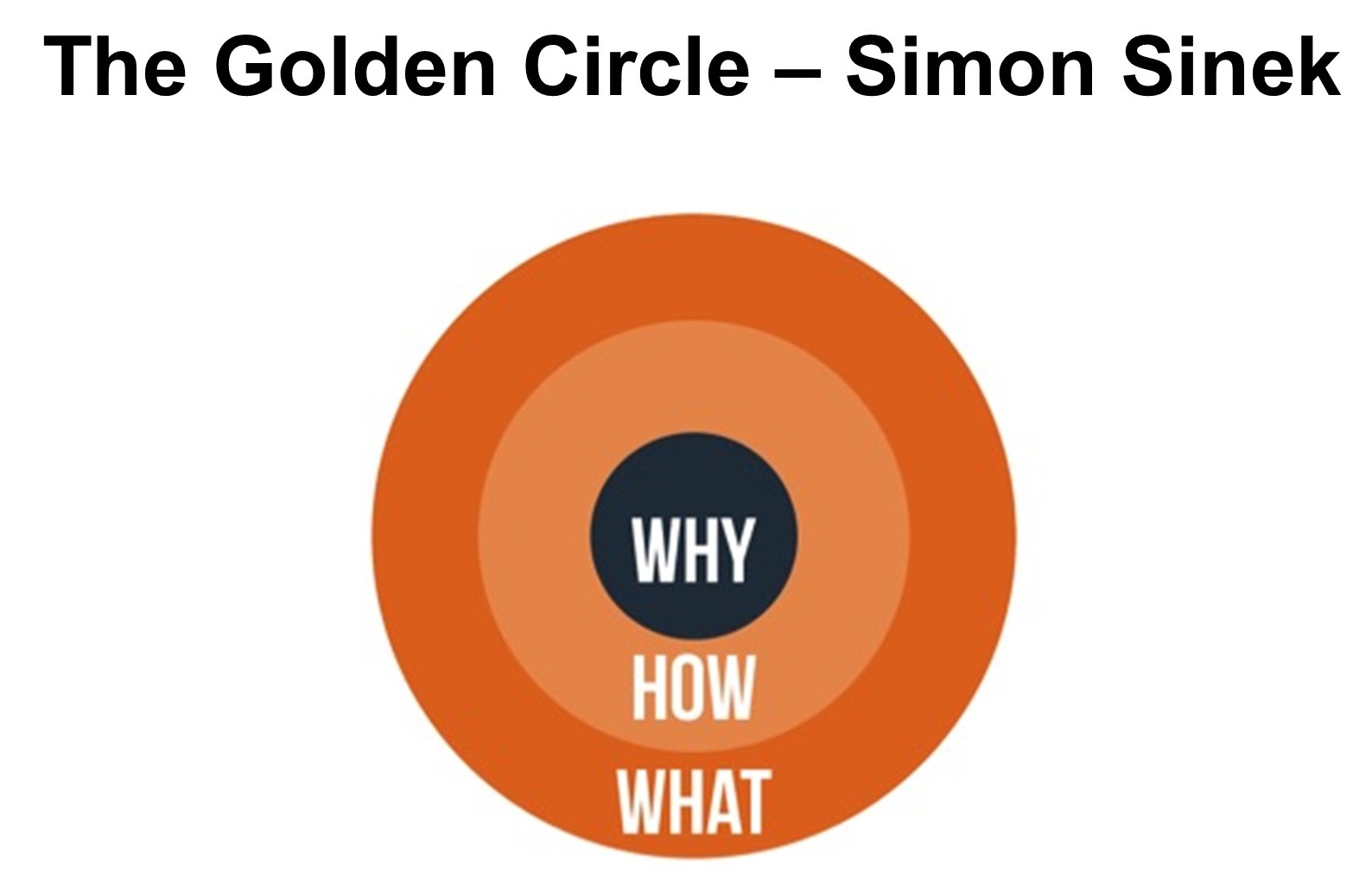
People started to realise the trainers that they’re wearing are the factor that kids from the other side of the world suffer from. People don’t want to wear those trainers anymore. Companies had to do something to change their images. That's where people were pushing for greatness. What is the purpose behind the brand?
With the era of social media, you can build a community of customers, not just clients. Your clients now become a community and interact with the influence of one another. That's very important. It's probably the cheapest way. For instance, when you buy something on Amazon, the first thing you do is check online feedback. If you see the item with good reviews you would probably buy it but if it has poor feedback you would most likely search for something else.
How do people make decisions?
I think we have one brain, but the brain is divided in three parts:
- Neocortex
- Limbic and
- Reptilian
And the second part is the part where it controls your emotions. Does this part control how you react in different situations? And the last part of the brain is the reptilian brain, I also like to call it the lazy brain. This is the part that we use most often. This part allows organs to function such as when we eat, when we drink water etc. The reptilian brain is to protect us and keep us alive. It relies on us to do as little thinking as possible, so we can make decisions.
You're constantly going to conflict and most of the time when we are making decisions on a subconscious level that we don't know. Could be an expense that we have and that's what we're influencing. How we feel, how we engage with a brand.
That’s why the reptilian has a huge impact on us. Most marketing when they communicate will communicate on a rational level, which is great when you want to attract. Then when you want to retain the attention of your audience, you need to do more in that. So quick sales, quick orders, there's no gaming. That's not going to guarantee the loyalty of a client. You need to go further than that and the relationship that you've built with them.
Understand the "Pain"
This is very useful when you do your campaign, your next campaign, and I'm going to break it down. The first thing is you want to diagnose the “pain” because we are selfish. When we want to differentiate our claim, we've contrasted and demonstrated the gain of tangible elements and delivered them to the reptilian brain. How it works:
I broke up with my boyfriend when I was in university and I was like a Burrito the whole day. The only thing that would make me happy was my mom so I took a flight back home, it was very cheap. I didn't think about the time to get to the airport because it was in Luton. I was living in Shadwell. I arrived in Victoria and the last coach to Luton has just left. My reaction was, oh my gosh, what am I going to do? I can't stay here. I have to go. And when people told me to take a taxi, I didn't think twice. I just jumped in the taxi. That taxi ride cost me 80 pounds.
We know we are emotional and we will have to make quick decisions. We just listen and do what we feel like it's right because we have to make a quick decision.
But what I want to show you here is how Uber and the success of Uber was the fact that they understood the “pain”. What is the biggest pain when you get a taxi? Before Uber existed how much is going to cost me? When is it going to be required because I don't want to wait and who is going to be that driver? Sometimes we will do so. It's easy. It's simple. We are very self-centred humans, we want to know what's in it for us.
Do not talk about your brand when you advertise to people because they do not care. They want to know what's in it for them. How are you going to make their lives easier? To some degree, selfishness is good, and selfishness is bad. But we're looking for a way to make our lives better or stay happy if we are already happy. We think from the point of view of your client, instead of talking about yourself, talk about how you make their lives better.
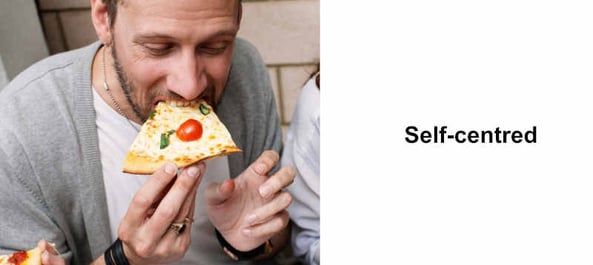
I'd have to give you some simple examples that you can use too. You can use testimonials or visuals if you are anybody who does B2B and B2C. So it was great because you can use that depending of PTC. If you do have a product or a service, we use your clients. It's so easy because if they love you, they will be more than happy to refer your company.
People take photos of products they like and post them on social media. The target social media is a great member of the importance of having a community around your product, around your brand is key in a cheap. Do it more often.
Visual Evidence
The next part is tangible. What is the value? Understand the value of what you are, you're the person that is solving. How are you making the life of someone better?
They launched a hot sauce ketchup a couple of years ago. The poster of the advertisement is a chair with lots of sweat on it. This is a very expressive and exclusive way of demonstrating the effectiveness of that product. Not every company has the budget of these huge companies but let me show you a budgeted way of doing it. Statistics and graph visual evidence are very effective. Toothpaste ads use actors and actresses but people believe them. What is it that we believe it? Because it looks so knowledgeable, we believe in it.
So think about visual evidence if you have statistics in terms of high improvement in the life of your customer.
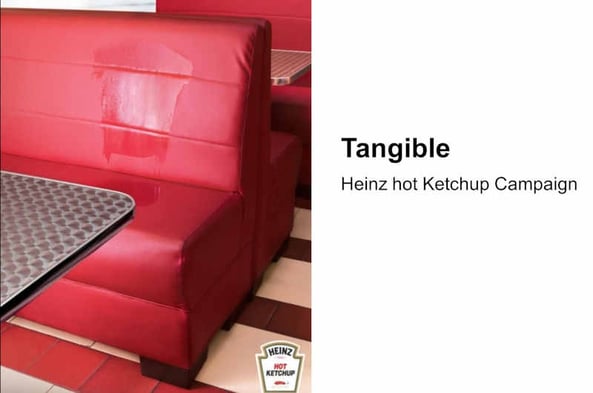
Visuals speak a thousand words. If you have photos and videos to support it, that's brilliant. Earlier on people were talking about views, videos are key. If you are using videos make sure you give those videos subtitles. On LinkedIn, I see a lot of videos without subtitles and sometimes people can’t play them out loud in public places. So make sure that you use subtitles when you do that.
Do you guys remember that campaign? Aldi did a campaign that gave out a taste test to people and mixed a leading brand with their brand. And they mix the two brands and people choose the Aldi brand or they taste similar. This ad was very effective.
If you have a budget, doing videos is a great idea. Also, eBook because it always thinks from a point of view where you are providing value before you start. If you try to help somebody then we'll likely want to work with you because you've tried your best to showcase that you are capable of what you do. Initial consultation if you want to offer, depending on what you do, is a great way to do that as well. PR is another great way as well as provide initial consultation. If you see a brand in a well-known magazine or you see a brand on TV, you will automatically believe in it.
It's very interesting how the brain works. Things that we believe in are just based on what we've recognised as credible. That's a very old campaign. Do you remember that campaign? In contrast, our reptilian brain is trained to notice the contrast. So elements where they have to choose very quickly. Are you the cool guy? You Mac? Think about how can you show the contrast between having your product and not having your product. Think about what is it that is against the value that you're providing. I'm obsessed with value and purpose because people are looking for purpose and value. What's in it for me and how are you going to demonstrate how you're going to make my life easier? You don't speak about anything else but that. The next part is the beginning and end. As much as I'm talking today, you probably won’t remember all of the information that's been given to you. But you are more likely to remember the information that's been given to you at the beginning and the end.
Beginning and End
Always remember to keep the most information at the end and at the beginning. If you watch TV, look at how they present their advertisements. They always present the car and then you go for a journey and at the end of the show the car and the logo again.
Our brain is very selective with what we remember because we can’t remember everything. Placing the most important content at the beginning is the mast and we put it at the end as imperative.
Use Emotion
Emotion. Again, I talked about the “why” is very important. It's because we can win situations where you have to make a lot of choices. If somebody exactly like me offers you the same product, you're going to go by emotion. Do I like this person? She makes me feel like she's funny, she's cool, she's very creative and so forth. These are the important elements. But what's interesting about that we process and ask the most towards negative emotions. That’s why we feel sad when we see charity ads. It was life to make them feel like they could do something about it, which is very important.
Simple is great. There was a campaign by Pepsi when they launched the diet version.
They used an elephant and the elephant was flying in the air like it was very light. It's a simple and very light way of just showcasing.
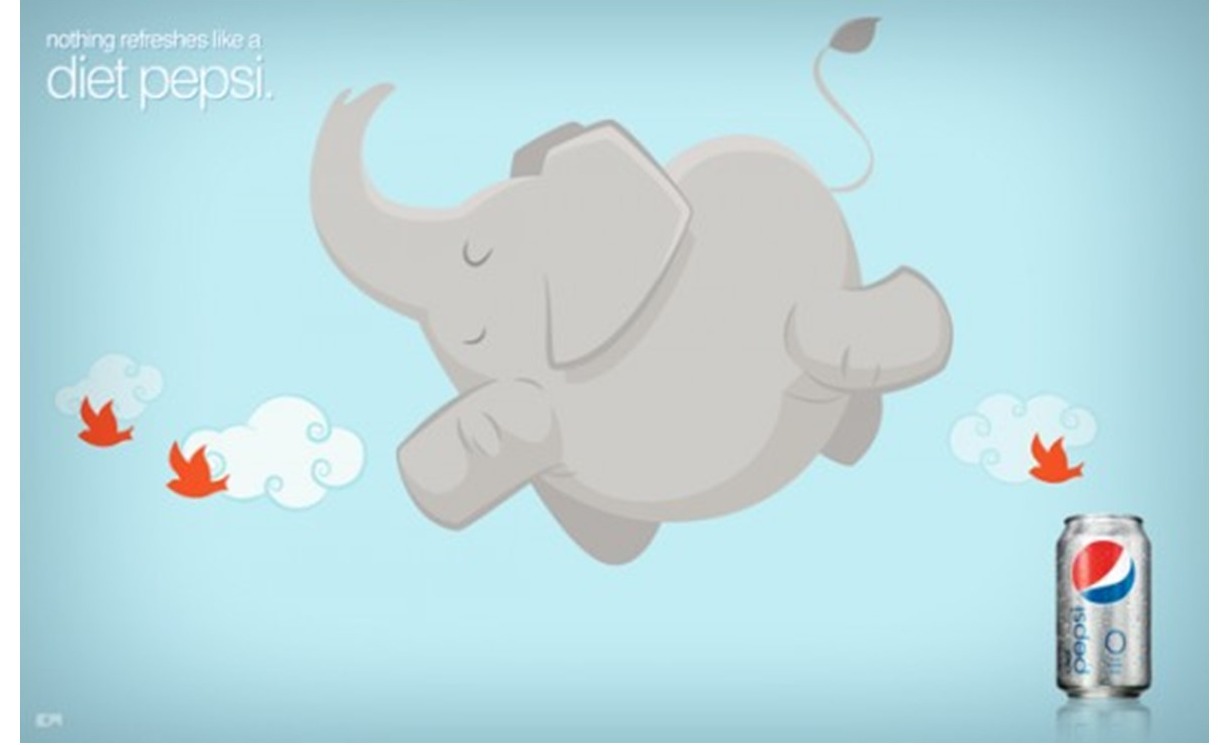
Try to use the six stimuli as much as possible. Three is always the magic number, use at least three of the stimuli. Remember the pain that consumers have, people are selfish. They look for a way to satisfy the pain that they're dealing with. You have to understand your customers. One of the biggest mistakes companies make is that they try to please everybody rather than select individuals. People pay more for an expert than a generalist.
The GP doesn't get paid as well as a surgeon. It's for a reason because he has chosen a very specific core skill and he becomes good at it. So you have to understand exactly what this client is about. And when you have the chance to talk to the clients be as specific as possible. When you are doing SEO, please do not write general content.
Be As Specific As Possible
Specific content will speak to your audiences. The more people feel like you're talking to them, they're more likely to be engaged with you. What did it feel like to have your product and not have your product? How do you put that against them? Using tangible elements and if you put all of this in the campaign, you're more likely to have a response very quickly.
You have a tube at the beginning and end with more simple information at the beginning, at the end and repeat it, it takes seven times for a prospect to engage with your brand seven times. So if you're advertising an ad for two weeks and you don't get a response, that's normal. It is better not to start it too quickly. Do AB tests to see if the campaign is enough to get reactions. We are working with a client at the moment about London Design Festival. We did a campaign with them and in less than two weeks we had over a thousand emails because it was very specific.
We chose a target audience. Our target audiences are millennials and female-focused. I'm using my audience or community to build, to attract more prospects to know about us. Visual is very important. I keep mentioning that visual evidence such as video. If you can't afford to get a videographer, you have your phone. It doesn't take long. I'm sharing about it. Don't be afraid, be active. The more you are consistent about why you project your message, the more likely you will be remembered.
Use LinkedIn for social selling, it is very good and useful. I have an average of one prospect per week on using LinkedIn. I should present the results of my clients and I work well on LinkedIn. People are looking for reassurance. The purpose is very important. Emotions must be used when mentioning brand loyalty.
Build a Brand Using Senses
Building a brand around senses: There are different ways of doing it, which are very effective. The more you use five senses the more people would remember it. If you think about Apple products the packaging is always the same. If you're going to Tiffany & Co., it's always a beautiful green box. You recognise it. Think about how you can maintain consistency with visuals. The brand doesn’t have to have a mascot, it could be a logo.
There’s an Italian brand, every time you open their shoe boxes it gives a strawberry scent. Whenever people open the box, they know it is that specific brand. It could be a good way as a lot of brands were trademarked for that specific reason.
Retail stores like Chanel, have a specific perfume that they use in their stores. It is good to be consistent all the time so that people can remember it.
Airlines like the Emirates have a perfume line that they require their staff to wear. Your brand has a sense that is associated with your brand is a great way to play with the subconscious mind. And most of the time we do not make decisions on a conscious level. We will make it on a subconscious level. It is when the reptilian brain is trying to make you have to make a decision very quickly and that's what it does to you.
Use Colours that Align with the Business Value
Colours have their meanings. This is probably one of the mistakes I've seen when it comes to branding. Often people associate the wrong colour with what they do and that affects how people remember you.
For example, red gives people the feeling of passion, white comes out as professionalism. The colour needs to align with the purpose and function of your business.
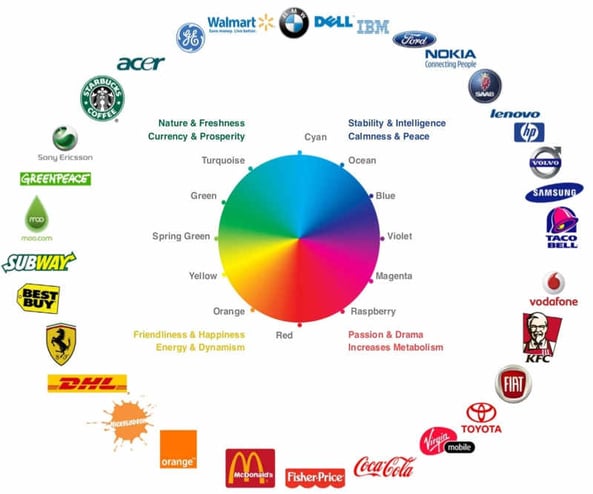
Think about how you want your brand to be portrayed. Do you want to come across as modern? Do you want to come across as modern and friendly? So obvious elements. A lot in your brand. Remember when people pick the products from a store, they do look at the colour first. Does it resonate with what your brand believes in? If you can afford organic brands, you will go for the brand that is associated with you.
"Choose brand colours that align with your brand values."
Our company is called 3 Colours Rule because I found that people were scared of wearing colours. So I told them to stick with 3 colours. If you look at most brands they follow the same rule, a combination of three colours. Sometimes you have less, sometimes you have it be more. Google is one of the rare examples, but the combination of three colours is great as well to align them with your values. So that's why I explained that the name of the three colours is a bit of a story behind the brand.
Conclusion
I'm putting the most simple information at the end and beginning. This is why we use brand and communication strategies to distinguish ourselves.
If you need help in terms of distribution of your business, that's why we do. Remember that your strategy is as important as your presentation. It's where I go to talk about what I do is important.
Think about it from a point of view of where your audience is. Think about it as everybody that you dealing with is selfish. They want to know what's in it for them, not what's in it for yourself.
"Don't talk about yourself. Talk about what you can do to make their life better."
Next steps
- Put a comment below and let us know what you think about how brands are using neuroscience in their marketing
- Book your place at the next London HUG event.
